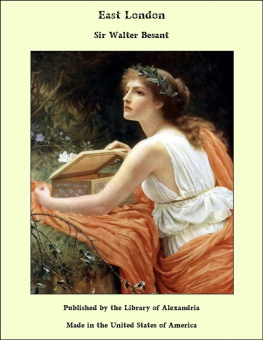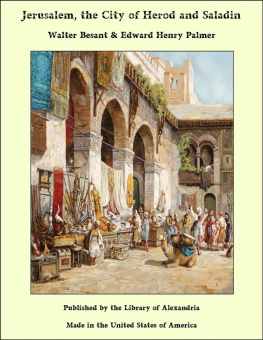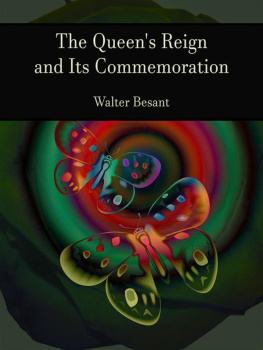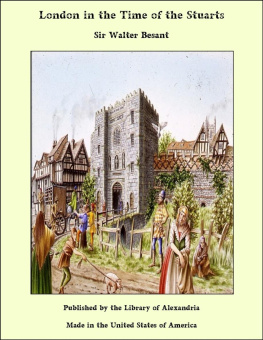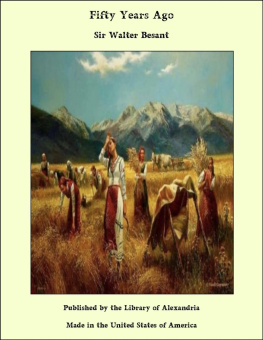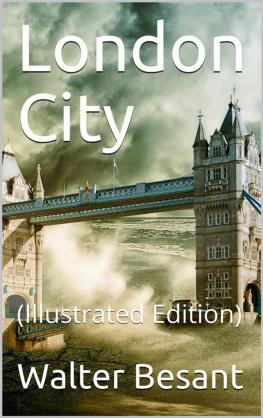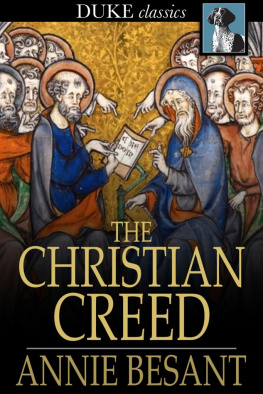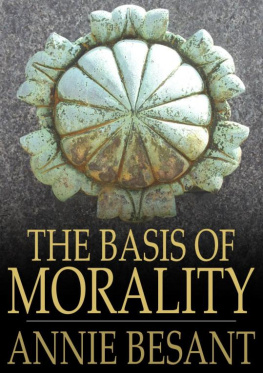Walter Besant - East London
Here you can read online Walter Besant - East London full text of the book (entire story) in english for free. Download pdf and epub, get meaning, cover and reviews about this ebook. year: 2020, publisher: Library of Alexandria, genre: Art. Description of the work, (preface) as well as reviews are available. Best literature library LitArk.com created for fans of good reading and offers a wide selection of genres:
Romance novel
Science fiction
Adventure
Detective
Science
History
Home and family
Prose
Art
Politics
Computer
Non-fiction
Religion
Business
Children
Humor
Choose a favorite category and find really read worthwhile books. Enjoy immersion in the world of imagination, feel the emotions of the characters or learn something new for yourself, make an fascinating discovery.
- Book:East London
- Author:
- Publisher:Library of Alexandria
- Genre:
- Year:2020
- Rating:4 / 5
- Favourites:Add to favourites
- Your mark:
- 80
- 1
- 2
- 3
- 4
- 5
East London: summary, description and annotation
We offer to read an annotation, description, summary or preface (depends on what the author of the book "East London" wrote himself). If you haven't found the necessary information about the book — write in the comments, we will try to find it.
East London — read online for free the complete book (whole text) full work
Below is the text of the book, divided by pages. System saving the place of the last page read, allows you to conveniently read the book "East London" online for free, without having to search again every time where you left off. Put a bookmark, and you can go to the page where you finished reading at any time.
Font size:
Interval:
Bookmark:
| PAGE | |
| I | WHAT EAST LONDON IS |
| II | THE CITY OF MANY CRAFTS |
| III | THE POOL AND THE RIVERSIDE |
| IV | THE WALL |
| V | THE FACTORY GIRL |
| VI | THE KEY OF THE STREET |
| VII | THE ALIEN |
| VIII | THE HOUSELESS |
| IX | THE SUBMERGED |
| X | THE MEMORIES OF THE PAST |
| XI | ON SPORTS AND PASTIMES |
| XII | THE HELPING HAND |
| INDEX |
| PAGE |
| A Street Row in the East End |
| Map of East London |
| London Street, Limehouse |
| A Typical Street in Bethnal Green |
| An East End Wharf |
| An East End Factory |
| Barge-Builders |
| The Water-Gate of London: Tower Bridge Looking Toward St. Pauls |
| The Bank of The Pool. Looking Toward Tower Bridge |
| In the Docks |
| The Tower of London |
| The Water-Gate of London: Tower Bridge from the East Side of the Tower |
| The Turn of the Tide on the Lower Thames |
| Coming Up the Lower Thames with the Tide |
| Off Shadwell |
| Ratcliffe-Cross Stairs |
| Limehouse Basin and Church |
| The Thames Side at Limehouse |
| Greenwich Hospital |
| Wade Street, Limehouse |
| In an East End Gin-Shop |
| The British Workman in Epping Forest |
| Brook Street, Limehouse |
| An August Bank-Holiday in the East End |
| A Music-Hall |
| The West India Dock Gates |
| The Barges that Lie Down the Thames |
| East London Loafers |
| The Hooligans |
| Sunday Gambling |
| Whitechapel Shops |
| A Corner in Petticoat Lane |
| A Schnorrer (Beggar) of the Ghetto |
| East and West Ham |
| East and West Ham, from the Marshes |
| Salvation Army Shelter |
| Sandwich-men |
| A Quiet Dullness |
| The Street and Old Church Tower, Hackney |
| An East London Suburb, Overlooking Hackney Marshes |
| Clapton |
| The Old Church, Stoke Newington |
| A Street in Stoke Newington |
| House in Stoke Newington in which Edgar Allan Poe Lived |
| Hampstead Heath, Looking Hendon Way |
| The Shooting-Gallery |
| On Margate Sands |
| Toynbee Hall and St. Judes Church |
| The New Whitechapel Art Gallery |
| The East London Mission |
| The New Model Dwellings |
| Dr. Barnardos Home, Stepney Causeway |
| Mile End Almshouses |
| The Bridge of Hope, A Well-known East End Night Refuge |
WHAT EAST LONDON IS
Font size:
Interval:
Bookmark:
Similar books «East London»
Look at similar books to East London. We have selected literature similar in name and meaning in the hope of providing readers with more options to find new, interesting, not yet read works.
Discussion, reviews of the book East London and just readers' own opinions. Leave your comments, write what you think about the work, its meaning or the main characters. Specify what exactly you liked and what you didn't like, and why you think so.

